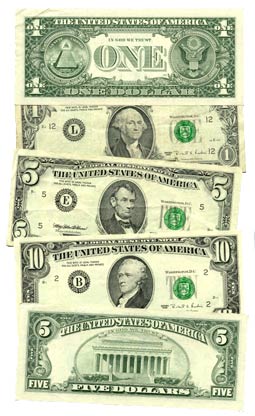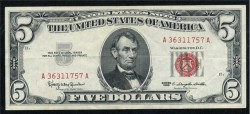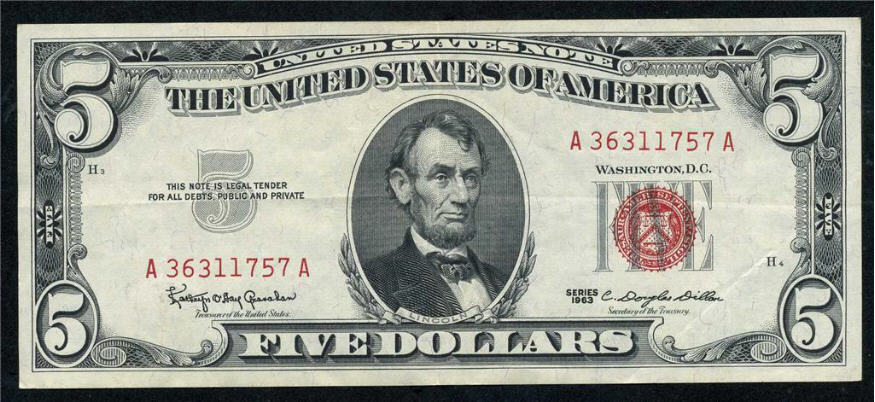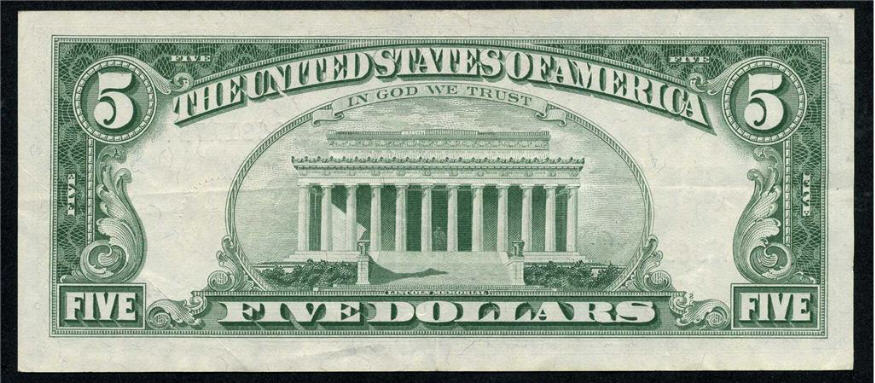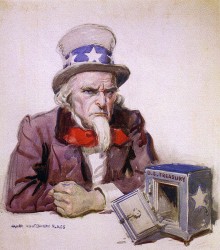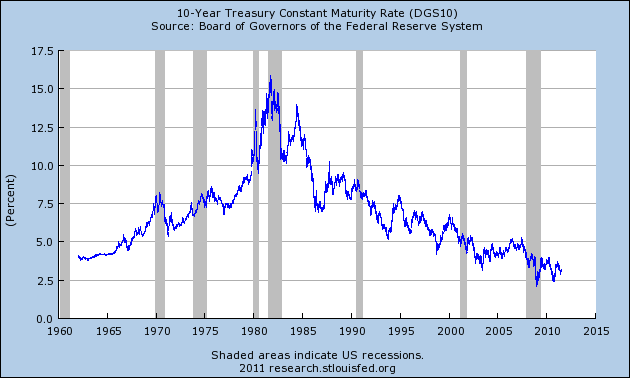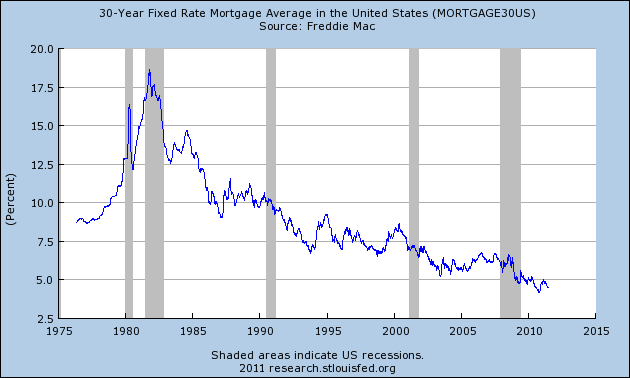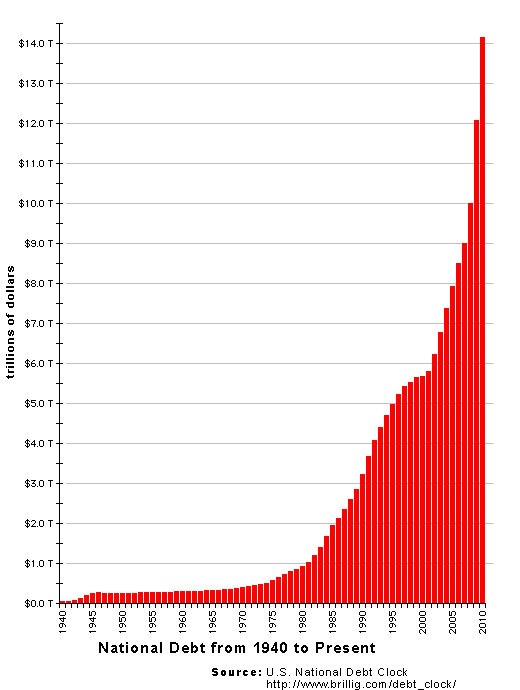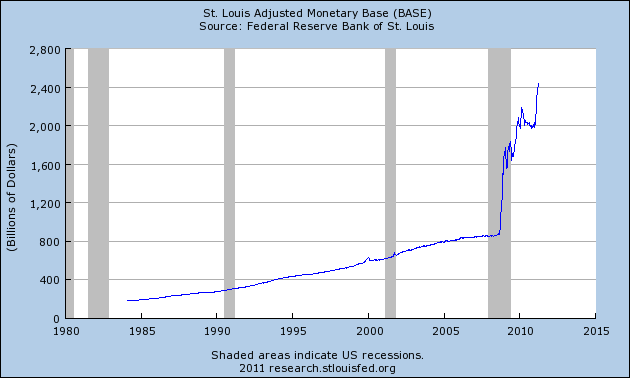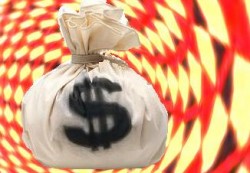 How is money created? If you ask average people on the street this question, most of them have absolutely no idea. This is rather odd, because we all use money constantly. You would think that it would only be natural for all of us to know where it comes from. So where does money come from? A lot of people assume that the federal government creates our money, but that is not the case. If the federal government could just print and spend more money whenever it wanted to, our national debt would be zero. But instead, our national debt is now nearly 16 trillion dollars. So why does our government (or any sovereign government for that matter) have to borrow money from anybody? That is a very good question. The truth is that in theory the U.S. government does not have to borrow a single penny from anyone. But under the Federal Reserve system, the U.S. government has purposely allowed itself to be subjugated to a financial system in which it will be constantly borrowing larger and larger amounts of money. In fact, this is how it works in the vast majority of the countries on the planet at this point. As you will see, this kind of system is not sustainable and the structural problems caused by such a system are at the very heart of our debt problems today.
How is money created? If you ask average people on the street this question, most of them have absolutely no idea. This is rather odd, because we all use money constantly. You would think that it would only be natural for all of us to know where it comes from. So where does money come from? A lot of people assume that the federal government creates our money, but that is not the case. If the federal government could just print and spend more money whenever it wanted to, our national debt would be zero. But instead, our national debt is now nearly 16 trillion dollars. So why does our government (or any sovereign government for that matter) have to borrow money from anybody? That is a very good question. The truth is that in theory the U.S. government does not have to borrow a single penny from anyone. But under the Federal Reserve system, the U.S. government has purposely allowed itself to be subjugated to a financial system in which it will be constantly borrowing larger and larger amounts of money. In fact, this is how it works in the vast majority of the countries on the planet at this point. As you will see, this kind of system is not sustainable and the structural problems caused by such a system are at the very heart of our debt problems today.
So where does money come from? In the United States, it comes from the Federal Reserve.
When the U.S. government decides that it wants to spend another billion dollars that it does not have, it does not print up a billion dollars.
Rather, the U.S. government creates a bunch of U.S. Treasury bonds (debt) and takes them over to the Federal Reserve.
The Federal Reserve creates a billion dollars out of thin air and exchanges them for the U.S. Treasury bonds.
So why does the U.S. government go to all this trouble? Why doesn’t the U.S. government create the money itself?
Those are very good questions.
One of the primary reasons why our system is structured this way is so that wealthy people can get even wealthier by lending money to the U.S. government and other national governments.
For example, last year the U.S. government spent more than 454 billion dollars just on interest on the national debt.
Over the centuries, the ultra-wealthy have found lending to national governments to be a very, very profitable enterprise.
The U.S. Treasury bonds that the Federal Reserve receives in exchange for the money it has created out of nothing are auctioned off through the Federal Reserve system.
But wait.
There is a problem.
Because the U.S. government must pay interest on the Treasury bonds, the amount of debt that has been created by this transaction is greater than the amount of money that has been created.
So where will the U.S. government get the money to pay that debt?
Well, the theory is that we can get money to circulate through the economy really, really fast and tax it at a high enough rate that the government will be able to collect enough taxes to pay the debt.
But that never actually happens, does it?
And the creators of the Federal Reserve understood this as well. They understood that the U.S. government would not have enough money to both run the government and service the national debt. They knew that the U.S. government would have to keep borrowing even more money in an attempt to keep up with the game.
That is why I call the Federal Reserve a perpetual debt machine. The Federal Reserve was created to trap the U.S. government in an endlessly expanding debt spiral from which there is no escape.
And the Federal Reserve is doing a great job at what it was designed to do. Today, the U.S. national debt is more than 5000 times larger than it was when the Federal Reserve was first created.
Another way that money comes into existence in our economy is through the process of fractional reserve banking.
I originally pulled the following simplified explanation of fractional reserve banking off of the website of the Federal Reserve Bank of New York, but it has been pulled down since then. But I still think it is helpful in understanding the basics of how fractional reserve banking works….
“If the reserve requirement is 10%, for example, a bank that receives a $100 deposit may lend out $90 of that deposit. If the borrower then writes a check to someone who deposits the $90, the bank receiving that deposit can lend out $81. As the process continues, the banking system can expand the initial deposit of $100 into a maximum of $1,000 of money ($100+$90+81+$72.90+…=$1,000).”
When you put your money into the bank, it does not say there. The bank only keeps a relatively small amount of money sitting around to satisfy the withdrawal demands of account holders. If all of us went down to the banks right now and demanded our money, that would create a major problem.
If I put 100 dollars into the bank and the bank lends out 90 of those dollars to you, now it looks like there are 190 dollars floating around. I have “100 dollars” in my bank account and you have “90 dollars” that you just borrowed.
The new debt that you have taken on (90 dollars) has “created” more money. But of course you are going to end up paying back more than 90 dollars to the bank, so more debt has been created than the amount of money that has been created.
And that is one of the big problems with our financial system. It is designed so that the amount of debt and the amount of money are supposed to be perpetually expanding, and the amount of debt created is always greater than the amount of money that is created.
So is it any wonder that our society is swamped with nearly 55 trillion dollars of total debt at this point?
A debt-based financial system is unsustainable by nature because it will always create debt bubbles that will inevitably burst.
Are you starting to see why so many Americans are saying that we need to abolish the Federal Reserve system?
Our founding fathers never intended for our financial system to work this way.
According to Article I, Section 8 of the U.S. Constitution, the U.S. Congress is supposed to have the authority to “coin Money, regulate the Value thereof, and of foreign Coin, and fix the Standard of Weights and Measures”.
So why has this authority been given to a private institution that is dominated by the big Wall Street banks and that has actually argued in court that it is “not an agency” of the federal government?
Thomas Jefferson once said that if he could add just one more amendment to the U.S. Constitution it would be a ban on all government borrowing….
I wish it were possible to obtain a single amendment to our Constitution. I would be willing to depend on that alone for the reduction of the administration of our government to the genuine principles of its Constitution; I mean an additional article, taking from the federal government the power of borrowing.
But instead, we have become enslaved to a system where government borrowing actually creates our money.
The borrower is the servant of the lender, and we have allowed our government to enslave us to the tune of nearly 16 trillion dollars.
There are alternatives to this system. Things do not have to work this way.
Unfortunately, the vast majority of our politicians consider the Federal Reserve to be good for America and steadfastly refuse to do anything to change the status quo.
So if you are waiting for “solutions” to these problems on the national level you are going to be waiting for a very long time.
The debt problems that the United States and Europe are experiencing did not come into existence by accident. They are the result of fundamental structural problems with the financial system.
A debt-based financial system is always going to fail in the long run. Unfortunately, most Americans still do not understand this and so we will all get to suffer the consequences.
